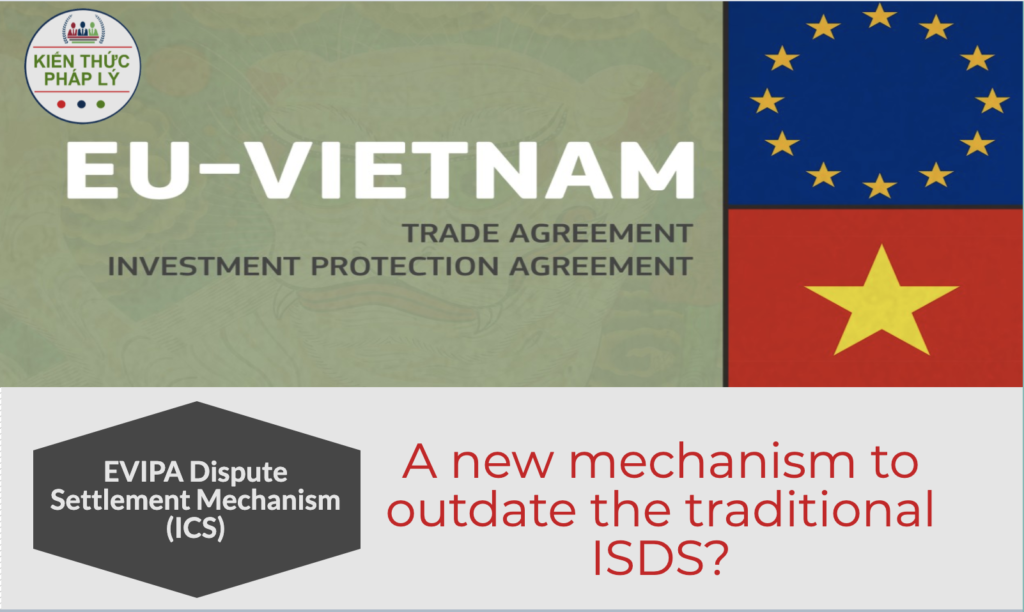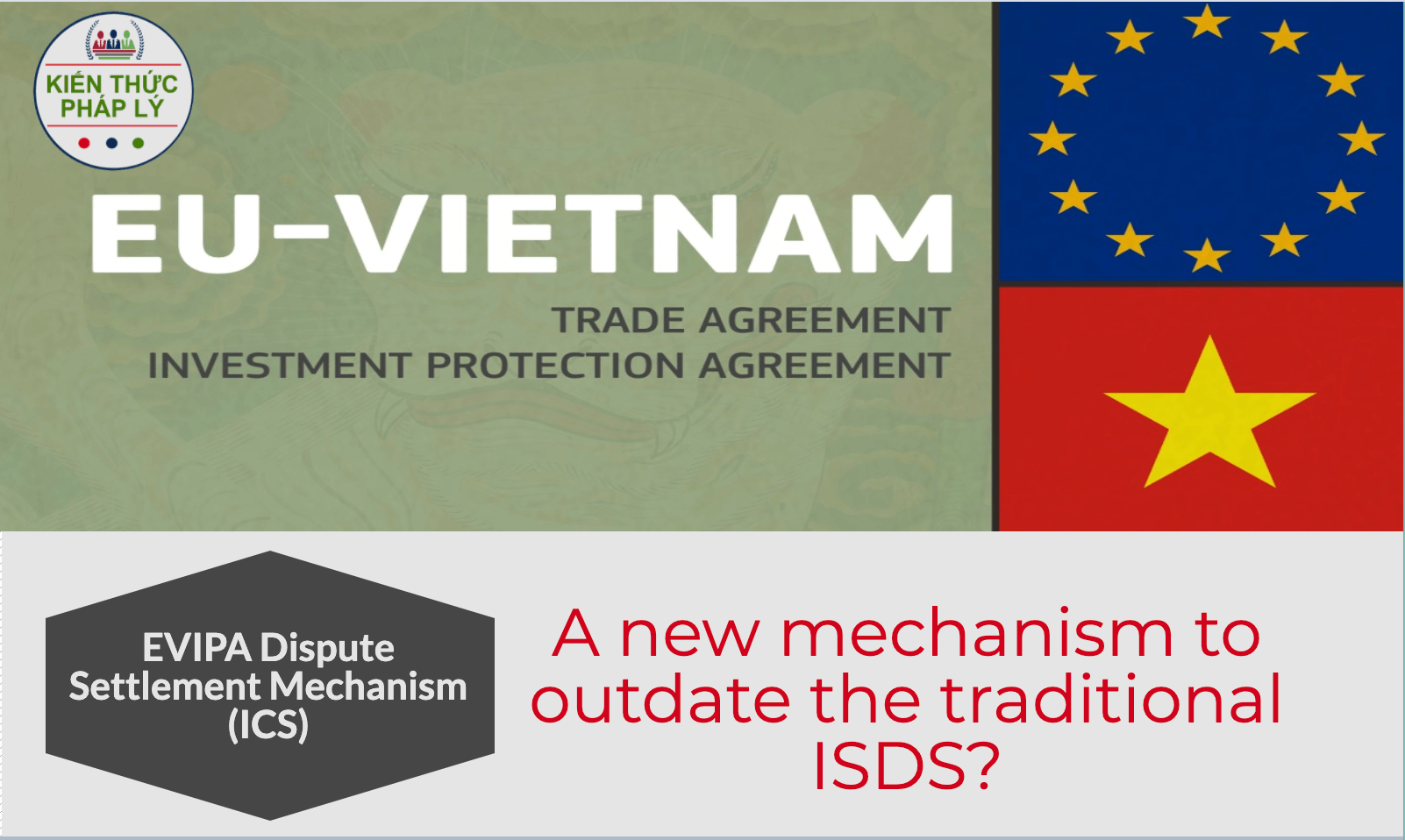The Investment Court System (ICS), developed and introduced by the European Union (EU) as a fresh approach to the Investor-State Dispute Settlement (ISDS)[1] in the new generation of free trade agreements (FTA), has been incorporated to the EU – Viet Nam Investment Protection Agreement (EUVIPA). EU claims ICS to be a new mechanism to replace for the “notorious” and traditional ISDS[2] (as set out in the ICSID Convention[3]), however, criticisms have also been raised against ICS from various aspects. This article shall provide an overview of the innovations or indeed, “upgrades” of the ICS in comparison with the mechanism provided under the ICSID Convention and the challenges arising therefrom. Limited critical analysis, whereby possible, shall be provided in relation to the concerned issues to be specified therein.

First and foremost, many legal scholars, on the one hand, have argued that ICSID Convention represented a merely one-sided arrangement, under which the host state is extremely vulnerable to the investor. On the other hand, other scholars view the picture of ICSID Convention as an imbalance arrangement rather than a one-sided one. Regardless of which, it is widely accepted that ICSID Convention has leaned on the side of the investor and therefore, caused a detrimental impact on the host country[4]. One of which is claimed to be a certain (or as frequently criticized, substantial) influence of the investor in the arbitration process[5]. ICS, as a response to this concern[6], provides for the investor neither the entitlement for appointing for the member of the Tribunal nor of the Appeal Tribunal. Under the EUVIPA, the Tribunal is composed of nine (9) tenured members (six (6) for the Appeal Tribunal)[7] who must be categorized evenly in accordance to their affiliation to the contracting parties. Hence, there is no involvement of the investors in the composition of the panel. However, this poses a new challenge that the nature of public international law in respect of the political influence has been significantly adopted under this approach – as opposed to the objective of politicization that ISDS was traditionally designed[8].
In addition to the above, EUVIPA has adopted the UNCITRAL Rules on Transparency[9]. It is not difficult to acknowledge that this is the effort to create transparency and accessibility to the public which was significantly undermined by the traditional ISDS. For a clearer picture, it is nowadays accepted that the settlement of the Investor-State Dispute should maintain its transparency as well as public accessibility as the impact of the settlement not only affects the private area but also the public area.
Thirdly, another criticism of the mechanism provided under the traditional ISDS is insufficient for an effective judicial review[10]. The annulment process, which is only triggered under very limited circumstances in accordance with the ICSID Convention, has been developed to the appellate process under the ICS in general and EUVIPA in particular[11]. To clarify, EUVIPA gives the right to the Appeal Tribunal to modify the decision of the Tribunal based on its own legal findings and conclusions or refer the matter back to the Tribunal[12]. The authority given thereunder to the Appeal Tribunal has a similar nature to a Court. Undoubtedly, it gives a losing party a subsequent opportunity to reverse the call but also lengthen the period for settlement, which is again counteracting to the objective of the ICSID Convention in the first place.
Given the above analysis, it is argued that the settlement mechanism provided under the EUVIPA or ICS, in general, has the nature and manner of a Court like system. Despite the reference to the New York Convention[13] having been made within the EUVIPA, there is a possibility that the effective decision given by the Tribunal or Appeal Tribunal under the EUVIPA may not be enforced under the New York Convention as it falls outside the scope of that Convention[14].
This article is not aimed to be exhaustive, rather than that, it only aims to flag up the issues that first come across my mind when conducting relevant research for the EUVIPA. It should be noted that there are undoubtedly other innovations as well as challenges underlying EUVIPA and the ICS in general terms.
The article is also available on LINKEDIN.
[1] Myriam Gicquello, The Reform of Investor-State Dispute Settlement: Bringing the Findings of Social Psychology into the Debate, Journal of International Dispute Settlement, Volume 10, Issue 4, December 2019, Pages 561–581, 561.
[2] European Commission, Press Release, Trade: European Court of Justice confirms compatibility of Investment Court System with EU Treaties (30 April 2019), https://ec.europa.eu/commission/presscorner/detail/en/IP_19_2334.
[3] International Centre for Settlement of Investment Disputes Convention (the ICSID Convention).
[4] Leon E. Trakman, The ICSID Under Siege, Cornell International Law Journal, Fall 2012, Vol. 45 Issue 3, 603 – 665, 606.
[5] Article 37.2 of the ICSID Convention, the parties (including the investor) are entitled to appoint the arbitrators.
[6] Lenk Hannes, An Investment Court System for the New Generation of EU Trade and Investments: A Discussion of the Free Trade Agreement with Vietnam and the Comprehensive Economic and Trade Agreement with Canada, European Papers – a Journal on Law and Integration 1.2 (2016), 665 – 677, 669.
[7] Subparagraph 2, Article 3.38 and subparagraph 2, Article 3.39, the EUVIPA.
[8] L. Pantaleo, Lights and Shadows, cit., p. 82; R.W. Schwieder, TTIP and the Investment Court System, cit.
[9] Subparagraph 1, Article 3.46, the EUVIPA.
[10] United Nations Conference on Trade and Development, World Investment Report 2015: Reforming International Investment Governance, New York, p. 150; it is generally suggested that an appeals mechanism would enhance credibility, legitimacy, coherence and foreseeability of the ISDS system, although it was also argued that an agreement-centric permanent court system risks increasing already existing discrepancies in awards, see R.W. SCHWIEDER, TTIP and the Investment Court System, cit.
[11] See footnote 6, 671.
[12] Subparagraph 5, Article 3. 54, the EUVIPA.
[13] New York Convention on Recognition and Enforcement of Arbitral Awards (New York Convention)
[14] See footnote 6, 670.
- TUÂN THỦ PHÁP LUẬT LAO ĐỘNG CHO DOANH NGHIỆP – CÁC LOẠI BÁO CÁO ĐỊNH KỲ (PHẦN 1) - Tháng 4 9, 2025
- LỰA CHỌN CƠ QUAN GIẢI QUYẾT TRANH CHẤP TRONG GIAO DỊCH MUA BÁN CÔNG TY CÓ LIÊN QUAN ĐẾN BẤT ĐỘNG SẢN - Tháng 1 12, 2025
- GIẢI QUYẾT TRANH CHẤP ĐẤT ĐAI THÔNG QUA TRỌNG TÀI: CƠ CHẾ MỚI, ÁP DỤNG RA SAO? - Tháng 1 6, 2025








